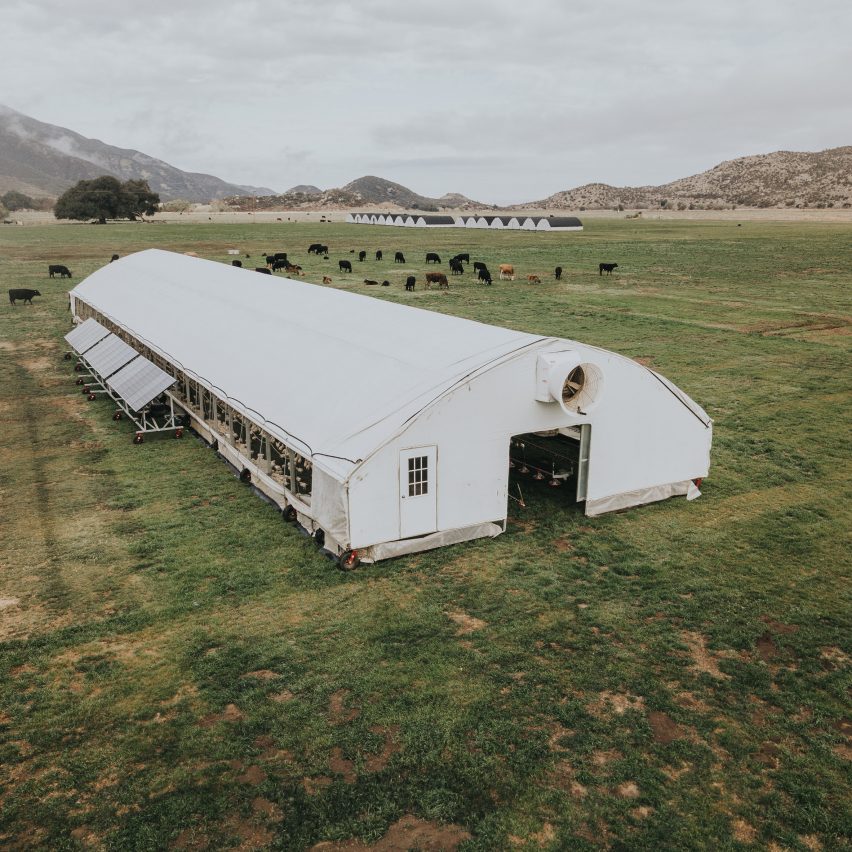
American poultry producer Pasturebird has invented a solar-powered robot chicken coop on wheels, which it says fosters regenerative farming while allowing the animals to “live their best life”.
Pasturebird‘s Automated Range Coop (ARC) is a large, floorless barn that each day rolls itself a short distance to allow the chickens within to graze on fresh pasture.
The company said it developed the design with assistance from NASA rocket scientists and investment from Perdue Farms, one of the USA’s biggest agriculture businesses, which purchased Pasturebird in 2019.
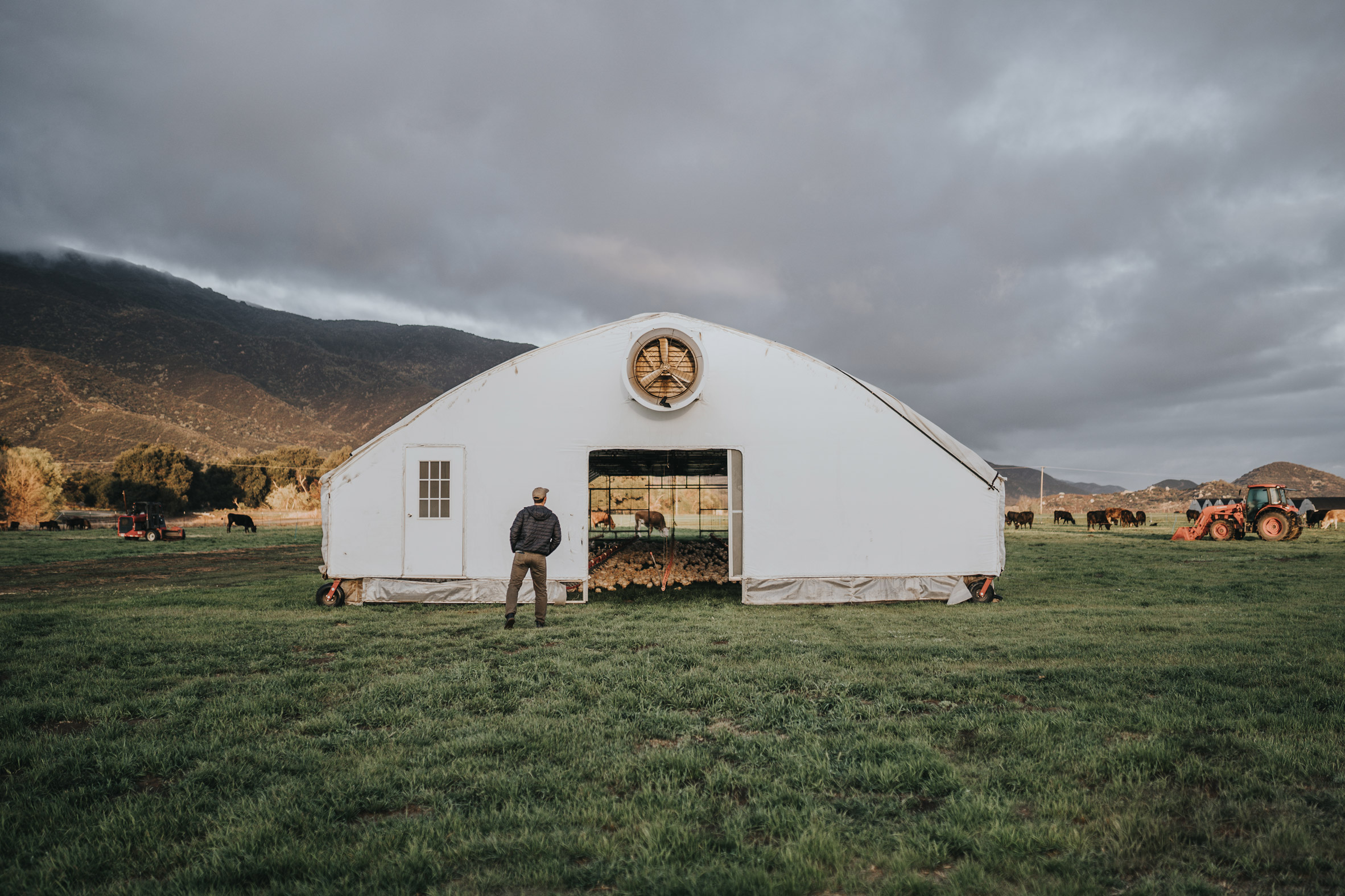
Pasturebird uses pasture raising – a form of farming that is usually considered a step up from free-range, as the animals have continual access to the outdoors while improving soil health as their mobile coops move over the land.
However, these coops are usually moved manually. According to Pasturebird, most farms have 80-bird coops and it takes about 15 minutes per coop to feed and move them.
By contrast, Pasturebird’s 700-square-metre robot coop contains 6,000 chickens that it moves to fresh pasture in five minutes, at the push of a button.
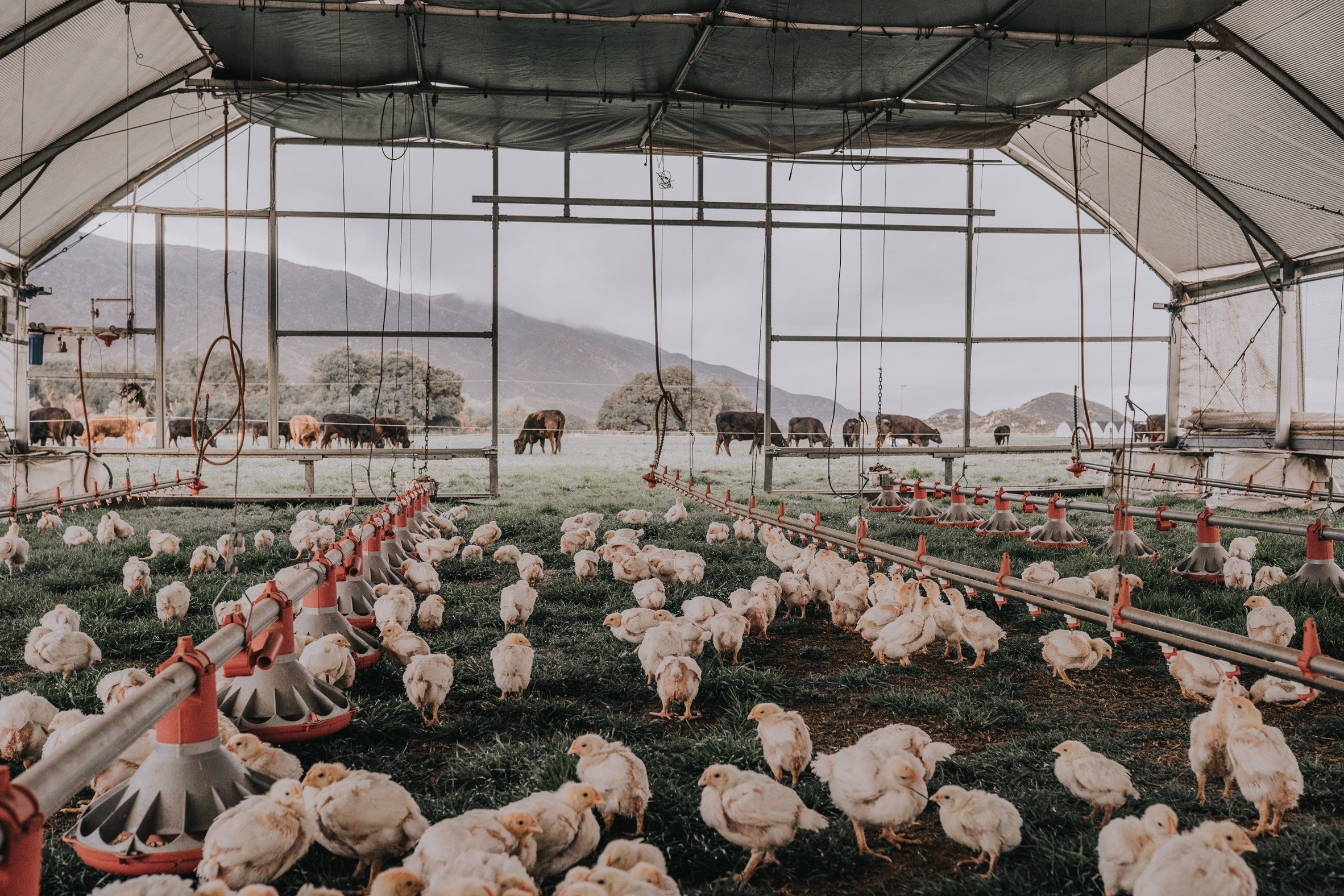
Pasturebird calls this “a major, much-needed disruption in animal agriculture” that “has completely changed how chickens can – and should – be raised”.
“Basically all chickens, including conventional, free-range, organic and many labeled as ‘pasture raised’, are raised in stationary, environmentally controlled barns,” said Pasturebird. “This system was designed in the 1940s as a response to demand for low-cost poultry.”
“It is an efficient, cost-effective means to house thousands of animals and provide them with the food, water and climate they need. But today, we understand that raising animals with these practices is not ideal – not only for the health of the animals but also for the health of the planet.”
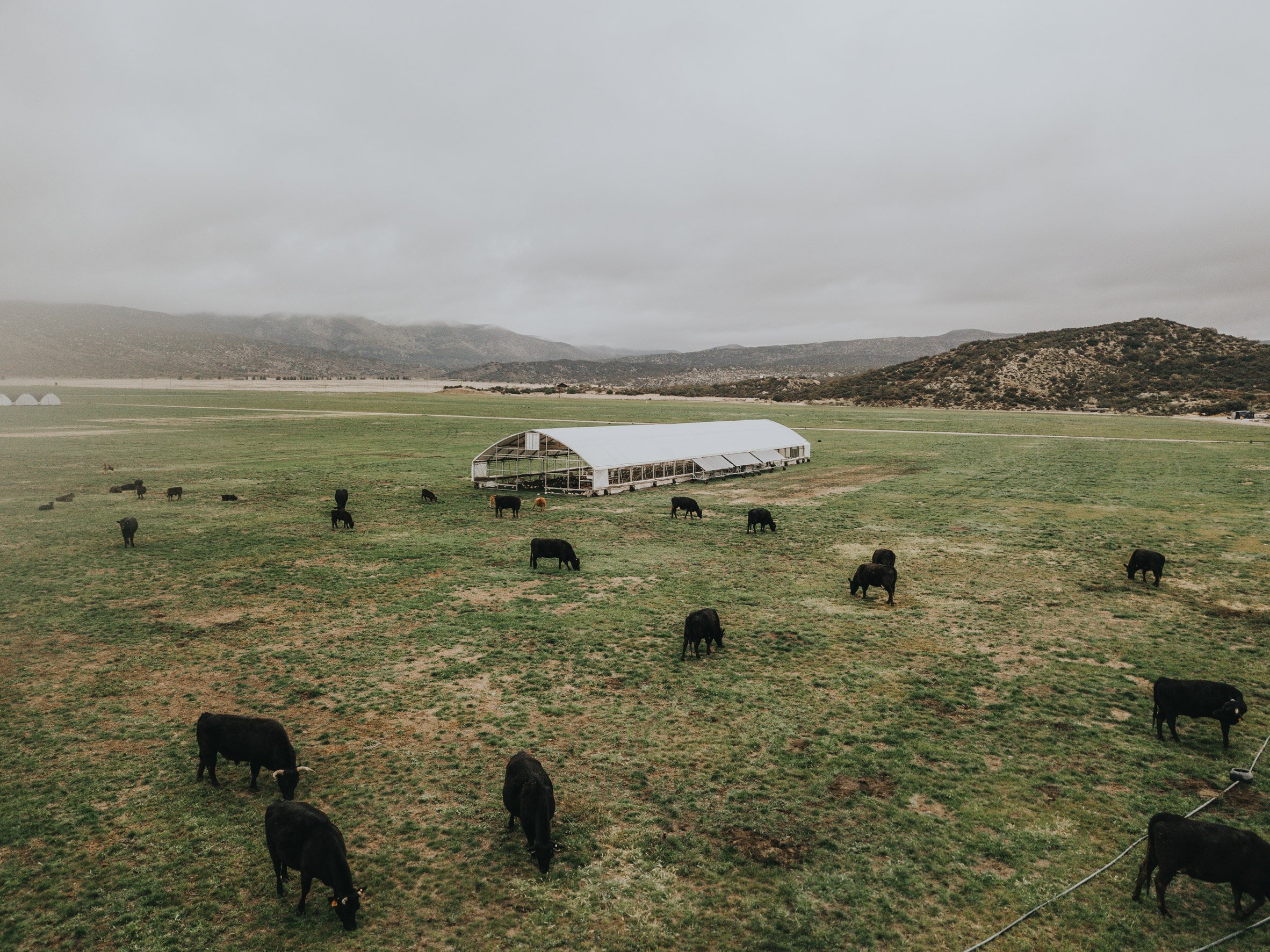
The company said that while pasture practices were a step in the right direction both for animal welfare and the environment, in reality farms that refer to “outdoor access” or “pasture access” can get away with raising the chickens in a conventional house with the doors open, which does not create any real benefit.
It said that its invention would help to improve the standard for raising animals and restore the natural ecosystems.
“With innovations like the ARC, Pasturebird is revolutionising farming from a man-made system of depletion back to a natural ecosystem of perpetual regeneration and replenishment,” said Pasturebird.
The ARC is entirely solar-powered, and its motorised wheels can handle a variety of natural terrain and soil types. In case of bumps, it has a flexible structure that can absorb the impact of rocks and debris.
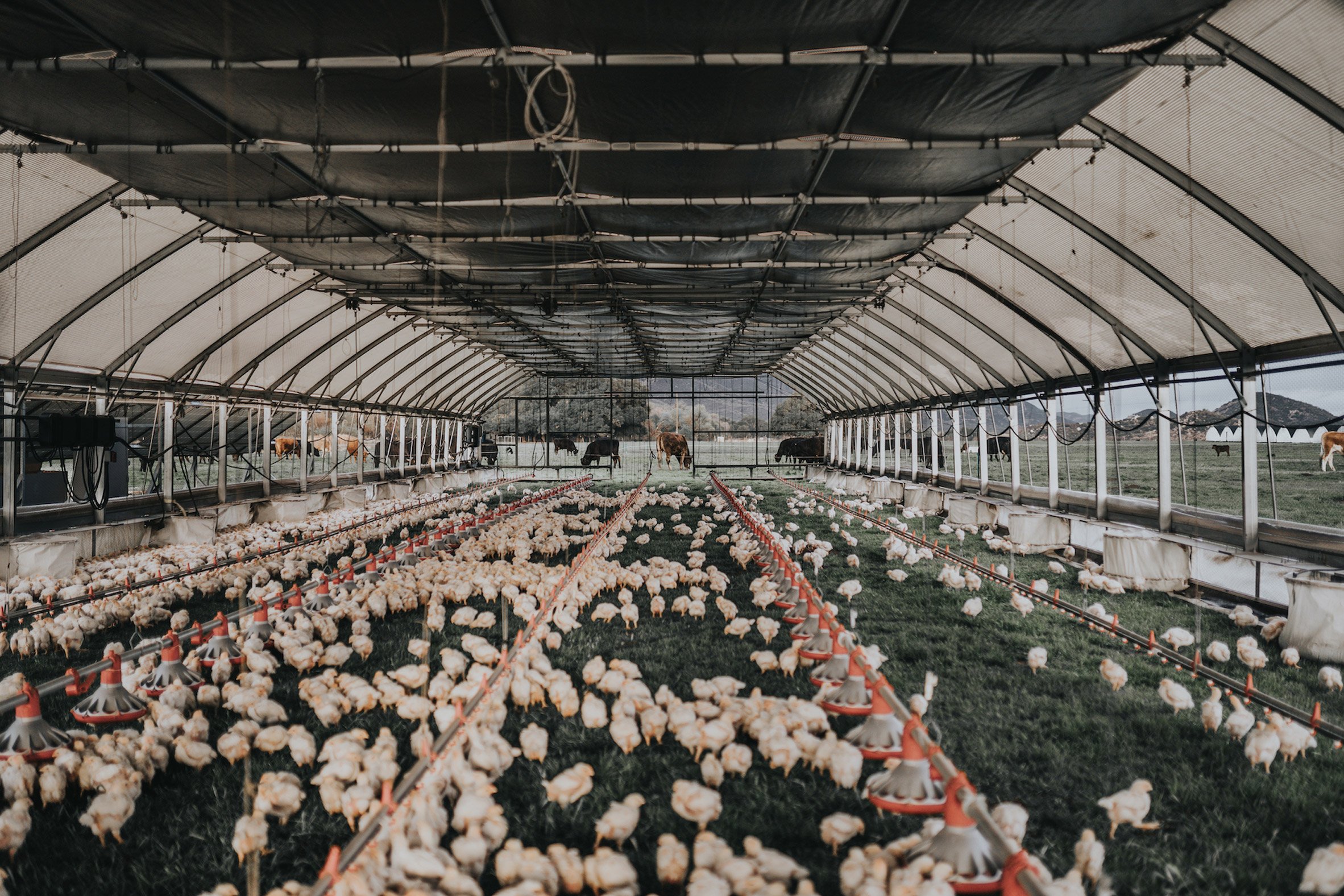
The structure has windows and doors allowing the chickens to roam freely beyond the coop in good weather, and it moves at chicken pace, covering around 15 metres in five minutes. In the future, Pasturebird hopes to develop an algorithm to automate the coop’s movement.
The ARC contributes to regenerative farming because it helps to integrate animals into cropland, reversing the damage done by industrialised monocultural farming.
Proponents of the agricultural practice say that the chicken poop is highly nutritious for the soil and reduces or eliminates the crops’ need for synthetic fertilisers.
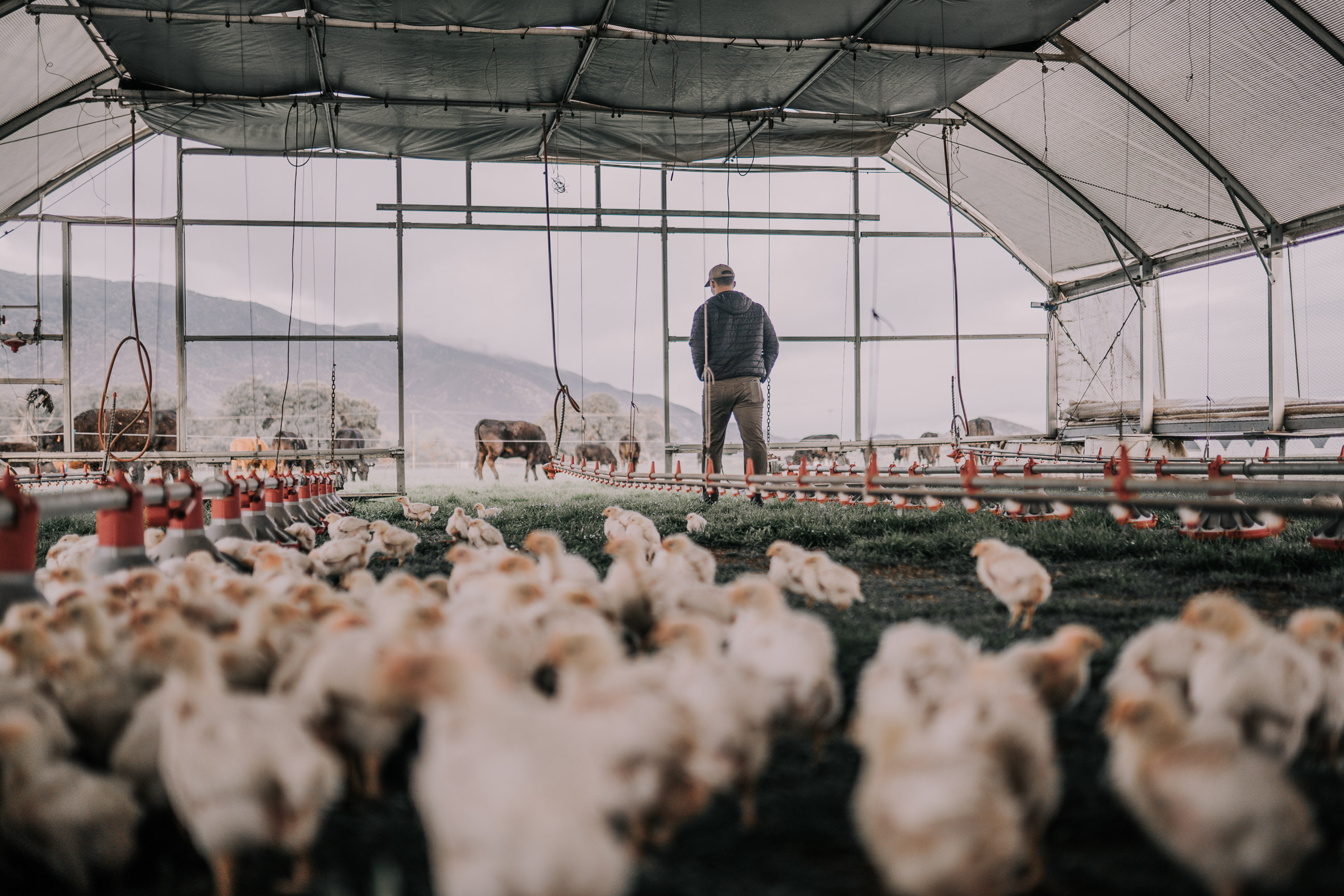
Regenerative farming has its critics, who argue that it requires even larger areas of land than industrialised farming, but Pasturebird co-founder Paul Greive argues that it is the best way forward for the planet.
“The future of food isn’t about regenerative items grown in isolation – it’s about reintegration of plants and animals grown in a rotation,” he told Dezeen. “It’s leveraging this age-old cycle: the plants feed the animals, the animals feed the plants, and humans will choose which of those outputs they want to eat.”
“That’s precisely why mobile livestock is so important – it allows animals to move across a landscape and reintegrate with crop fields, vastly increasing nutrients produced per acre (an important metric and different from basic calories) while decreasing synthetic inputs.”
Some of the alternatives touted for a more sustainable future are lab-grown meat and a protein made by microbes eating carbon dioxide from the air, both of which would free up agricultural land for rewilding.
The post Pasturebird introduces solar-powered robot chicken coop appeared first on Dezeen.
